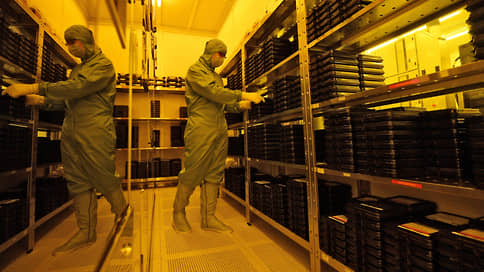Chip independence at a discount – Newspaper Kommersant No. 211 (7412) dated 11/15/2022
[ad_1]

Although a critical range of microchips is produced in the Russian Federation, the current production capacities are no longer enough to cover demand even at the basic level, follows from the report of the strategic consulting company Yakov and Partners. To achieve sovereignty in the field of microelectronics, the Russian Federation needs investments in the amount of 400-500 billion rubles. until 2030, this will allow expanding the production of microchips in the country in a volume that compensates for their shortage in the industry. So far, industrial demand, according to these estimates, is more than three times the actual volume of production.
The experts of Yakov and Partners (created, among other things, by Mckinsey ex-partners in the Russian Federation) prepared a report “Russian Microelectronics: From Scarcity to Technological Independence” (“Kommersant” got acquainted with the document), in which they presented an assessment of the reboot of this industry necessary to ensure industrial sovereignty.
At present, the share of the Russian Federation in the world volume of production is less than 1%, however, investments in the amount of 400-500 billion rubles. experts believe that this is the first non-state estimate of this kind, it is significantly lower than the previous state estimates of 1-2 trillion rubles. for several years.
Now in the Russian Federation there is not enough production capacity to cover the needs for microchips, even at a basic level (according to the technical process of 90 nm or more) – experts estimate the current demand for them at 30,000 wafers per month. “Currently, a critical range of microchips is being produced in Russia, but the current production capacity is not enough to cover demand even at a base level of >90 nm, and there is more than a threefold gap between industrial demand and actual production volume,” the report says. More than 70% of the country’s existing microchip production capacity has not been put into operation – a move that could help close the shortfall almost completely. The potential production capacity of equipment for the production of chips at a basic level (more than 90 nm) in the Russian Federation is 26,000 wafers per month, while the actual capacity used makes it possible to produce only 8,000
According to Yakov and Partners, in the next five years, the total demand for chips in the Russian Federation may double and reach 60 thousand wafers per month, in 2030-2035 – more than 100-150 thousand wafers.
Previous attempts to solve problems through the promotion of public procurement have been largely unsuccessful.
One of the challenges is the lack of own photolithographic equipment and production of silicon wafers in the country. “To cover such an acute shortage, it is necessary to urgently launch idle machines according to the basic technical process, as well as to additionally ensure the import of equipment from friendly countries, including considering the purchase of used equipment from manufacturers from Southeast Asia,” notes Yakov i partners” and one of the co-authors of the report, Tigran Sahakyan. Cooperation with Southeast Asian countries will allow Russia to launch the production of microcircuits in the basic segment at the turn of 2027-2028, and by 2030 to fully meet the demand for critical nomenclature.
The total investment to expand local production and subsidize research and development may amount to about 400-500 billion rubles, half of which is budgetary funds, more than half of the investment should come from capital expenditures, modernization of production sites, as well as the creation of new lines for the production of chips and silicon wafers in 200 mm. It is necessary to develop our own competencies in the development and manufacture of not only basic, but also modern chips in the long term, until 2040 – achieving this goal and further developing the industry will require additional investments in the amount of up to 300 billion rubles.
[ad_2]
Source link






